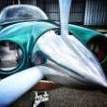This guy is an embarrassment to Mooney pilots.
-
Members Online
- Schllc
- Air pirate
- Rwsavory
- MikeOH
- EarthboundMisfit
- Smiles201
- PT20J
- Brian2034
- Justin Schmidt
- Kenfen
- Ibra
- Griswold
- Van Lanier
- takair
- M Terry
- Bob Weber
- KASE
- christaylor302
- N201MKTurbo
- EricJ
- good2eat
- bcg
- FlyngDude
- M20F
- Grant_Waite
- thomas1142
- concussion962
- Taildraggerpilot
- TreetopMooney
- chrisburdzy98
- 1980Mooney
- skydvrboy
- tony
- AndreiC
- marcusku
- TCC
- Hradec


Recommended Posts
Join the conversation
You can post now and register later. If you have an account, sign in now to post with your account.